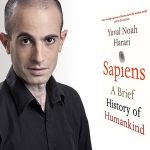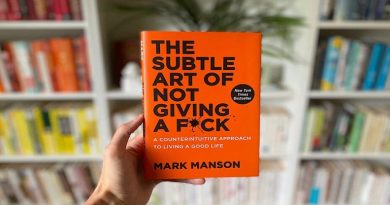“Guns, Germs, and Steel” By Jared Diamond summary
Welcome to our blog, where we delve into the fascinating world of literature! Today, we are diving into the renowned book “Guns, Germs, and Steel” by Jared Diamond. In this article, we will provide you with an insightful plot summary and explore the key themes that Diamond expertly uncovers in his groundbreaking work. By understanding the relevance and usefulness of his research, you will gain a deeper understanding of the forces that have shaped human history. So, let’s embark on this intellectual journey together and uncover the captivating ideas presented in “Guns, Germs, and Steel”!
Overview of Guns, Germs, and Steel: A synopsis of the book’s plot and key themes
In the book “Guns, Germs, and Steel” by Jared Diamond, a fascinating analysis of why certain societies thrived while others did not is presented. Diamond explores the implications of geography, biology, and culture on the historical development of civilizations. By examining different continents and their interactions, the author uncovers unique patterns and forces that shaped the destinies of societies.
Diamond’s book takes us on an exciting journey through time, starting with the rise of agriculture and domestication of plants and animals. He emphasizes the importance of regional differences in available crops and animals, explaining how they led to disparities in food production and ultimately contributed to uneven development across the globe. Furthermore, Diamond delves into the impact of epidemic diseases and discusses how the presence of certain germs influenced the balance of power between societies.
This book emphasizes the idea that all humans possess equal intellectual capabilities as one of its key themes. Diamond stresses that differences in societal advancements are not rooted in inherent intellectual inequalities but rather in various environmental factors. This empowering idea challenges traditional notions of racial superiority, promoting equality and understanding among individuals from different backgrounds. Ultimately, “Guns, Germs, and Steel” offers a thought-provoking perspective that helps us better comprehend the complex and interconnected world we live in today.
Overview of Guns, Germs, and Steel: A brief summary of the book, its author, and a synopsis of its main points
Jared Diamond’s groundbreaking book, “Guns, Germs, and Steel,” offers invaluable insights into the shaping of human civilizations. The author’s impressive credentials as a scientist and anthropologist lend credibility to this engaging analysis. As the title suggests, the book explores the pivotal roles played by guns, germs, and steel in shaping the destinies of different nations throughout history.
Diamond delves into the reasons why some civilizations thrived while others perished, debunking the notion of inherent racial or intellectual superiority. Instead, he attributes these differences to geographic advantages, access to essential resources, and the inadvertent introduction of deadly diseases. Diamond’s narrative is both informative and thought-provoking, challenging long-held assumptions about the rise and fall of societies.
Within “Guns, Germs, and Steel,” Diamond artfully explores the idea that geography has a profound influence on human societies. He argues that geographical factors, such as the availability of arable land, natural barriers, proximity to potential trade partners, directly impact a nation’s development. Diamond also highlights the devastating impact of diseases introduced by European colonizers, which decimated indigenous populations and ultimately influenced the course of history. With this comprehensive analysis, “Guns, Germs, and Steel” offers readers a refreshing perspective on the factors that contributed to the world we inhabit today.
Reasons for History’s Differential Development: How geography, climate, and other geographical factors influenced outcomes
The development and progress of different societies throughout history have been influenced by a variety of factors, with geography and climate playing a significant role. In his book “Guns, Germs, and Steel,” Jared Diamond examines how these geographical factors shaped the outcomes of human history. By exploring the interplay between geography and the development of societies, Diamond sheds light on the reasons behind the differential development seen across different regions.
One key factor that Diamond emphasizes is the impact of geographic barriers on the diffusion of technology, ideas, and resources. Inaccessible mountain ranges, deserts, or bodies of water can hinder interaction and trade between societies, leading to uneven development. Additionally, variations in climate can affect the availability of natural resources, such as fertile land for agriculture mineral deposits for industrial development. These geographical advantages or constraints can create disparities in societies’ ability to thrive and innovate.
Moreover, Diamond also highlights the influence of geographical factors on the spread of diseases. Different regions have distinctive climates and ecosystems, which provide unique environments for particular pathogens to flourish. As a result, societies living in certain areas were exposed to more infectious diseases, leading to higher mortality rates and population decline. Conversely, some geographical locations were less susceptible to the spread of diseases, allowing societies to grow in numbers and develop more advanced technologies.
By examining the intricate relationship between geography, climate, and other geographical factors, Diamond brings to light the reasons behind the divergent paths taken by different societies throughout history. Understanding these influences can help us appreciate the complexities of human development and the impact of our environment on our progress. “Guns, Germs, and Steel” encourages us to recognize the importance of these factors in shaping our past while offering insights into how we can navigate the challenges of our present and future.
Key Themes of Guns, Germs, and Steel: Exploring the main ideas and arguments of the book, and their implications
Readers will be taken on a thought-provoking journey through human history in “Guns, Germs, and Steel,” a book by Jared Diamond that takes readers inside the main ideas and arguments that shaped modern society. Through meticulous research and compelling analysis, Diamond explores the key themes that encompassed the rise and fall of civilizations, providing readers with a fresh perspective on human development.
One of the main arguments put forward by Diamond is that geographic factors played a critical role in determining the fates of different societies. He explains how certain regions of the world were naturally endowed with more favorable conditions, such as fertile land abundant resources, which allowed them to develop advanced societies. Conversely, other regions faced geographical constraints that limited their ability to progress.
Furthermore, Diamond argues that the diffusion of technologies and knowledge played a significant role in shaping the course of history. He highlights how certain innovations, such as the advent of agriculture or the domestication of animals, led to significant advancements in human societies. The ability to efficiently grow crops or raise livestock not only contributed to population growth but also allowed for the development of complex social structures and technological advancements.
By exploring these themes, Diamond sheds light on the complex interplay between geography, technology, and societal development. His insights challenge the traditional Eurocentric perspective of history and emphasize the importance of considering broader factors when analyzing the rise and fall of civilizations. “Guns, Germs, and Steel” offers readers a fascinating and enlightening perspective on the course of human history, encouraging us to critically reflect on the factors that have shaped our world.
The Effect of Technology and Agriculture: How the development of agriculture and technology shaped the world
The development of agriculture and technology has had an incredible impact on the world we live in today. From the very beginning, these advancements transformed our society and shaped the course of civilization. With the advent of agriculture, humans were able to settle in one place and establish permanent communities, leading to the rise of cities and complex societies. This agricultural revolution also allowed for the surplus of food production and the growth of populations, leading to further innovations in technology.
As agriculture flourished, technology advanced in tandem. Tools were improved, making farming more efficient, leading to increased productivity and the ability to feed even larger populations. The development of technology also enabled humans to harness the power of nature, with the invention of irrigation systems, which played a vital role in the success of agriculture. Additionally, new technologies and techniques allowed for the domestication of animals, which further increased productivity and provided a source of labor.
The effect of technology and agriculture is undeniable. It has shaped the world we live in today, allowing for the growth of civilizations, the rise of cities, and the development of complex societies. It has provided the foundation for further advancements in science, industry, and medicine. As we continue to progress and innovate, it is important to recognize the profound impact that agriculture and technology have had on shaping our world and to continue to harness their power for the betterment of humanity.
Conclusion
A compelling explanation for the unequal distribution of power and wealth in our world can be found in Jared Diamond’s groundbreaking book “Guns, Germs, and Steel”. By exploring the interconnectedness of geography, biology, and history, Diamond challenges conventional narratives of superiority and lays bare the true driving forces that have shaped the fate of civilizations. It forces us to question our own assumptions about why some societies have prospered while others have suffered. This book serves as a wake-up call, urging us to recognize the complex interplay of factors that have molded our world, so that we may learn from history and strive to create a more equitable and inclusive future. As we engage with Diamond’s ideas, let us be inspired to dismantle the barriers that perpetuate inequality and forge a new path towards a more just and harmonious global society.












